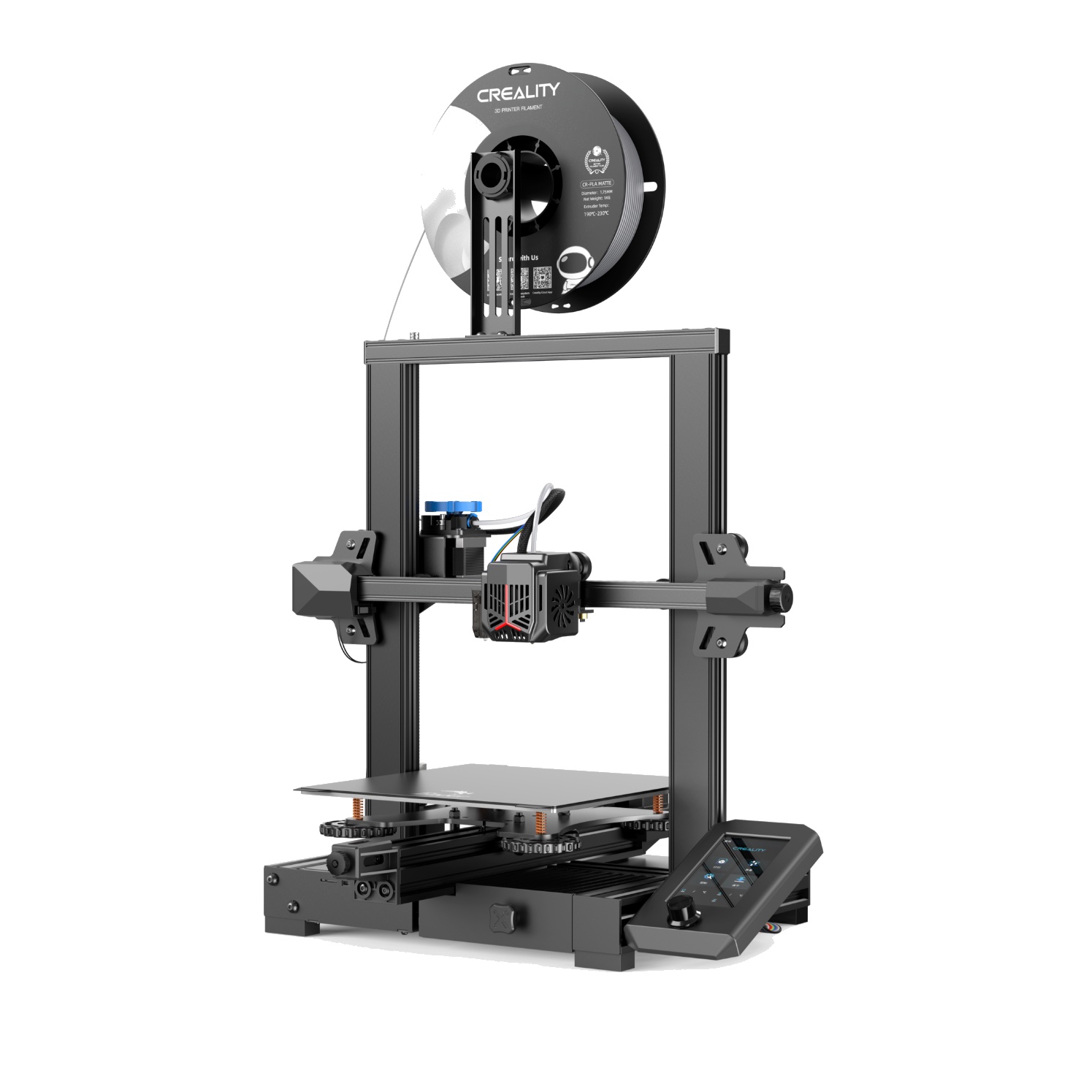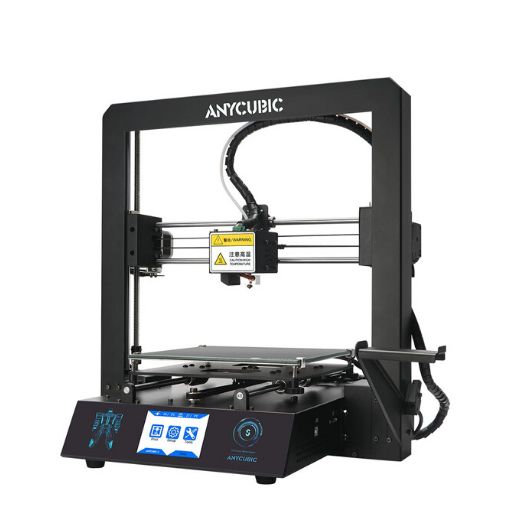Compare Ender 3 V2 Neo vs Mega S
Comparison between the best 3D printers
Choose the best 3D printer at the best price. The cheapest 3D printers are here.
Buy a 3D printer here with 3D Fila.
 |
 |
|
| Model | Ender 3 V2 Neo[BUY Ender 3 V2 Neo] |
Mega S |
| Printing Material | Filament | Filament |
| Buy Filament for Creality 3D Ender 3 V2 Neo | Buy Filament forAnycubic Mega S | |
| Estimated price | $310,00 | $149,00 |
| Manufacturer | Creality 3D | Anycubic |
| Release Year | 2022 | 2019 |
| Print Volume [mm] | 220x220x250 | 210x210x205 |
| Printer Size [mm] | 438x424x472 | 405x410x452 |
| Weight [kg] | 9,8 | 14,5 |
| Power Loss Recovery | YES | YES |
| Enclosed printer | NO | NO |
| Bed Leveling | Automatic | Manual |
| Filament End Sensor | YES | YES |
| Bed type | Heated | Heated |
| Power supply system | Bowden | Bowden |
| Standard nozzle | 0,4 | 0,4 |
| Maximum Nozzle Temperature [°C] | 260 | 260 |
| Maximum Bed Temperature [°C] | 100 | 110 |
| Maximum printing speed [mm/s] | 80 | 100 |
| Filament holder | YES | YES |
| Camera for supervision | NO | NO |
| Recommended filaments | PLA, PETG | PLA, TPU, ABS, PETG |
| Recommended slicers | Cura, Simplify, Slic3r, IdeaMaker | Cura, Simplify, Slic3r |
| Maximum Resolution [mm] | 0,1 | 0,1 |
| Processor | 4.2.2 mainboard | 8 bits |
| Display | Display touchscreen 4,3'' | Touchscreen TFT 2,8'' |
| Power Supply | 12V / 300W | |
| Connectivity | SD / USB | SD / USB |
| Operating systems | Windows, Mac, Linux | Windows, Mac, Linux |
| Date of registration in the system | 2022-12-09 | 2021-04-15 |
| Release date | 2022 | 2019 |
| Extra features | The Ender 3 V2 Neo printer stands out for its automatic bed leveling with the CR Touch system, ensuring high-quality initial layers. It features an all-metal Bowden extruder for increased durability and improved filament handling. Its flexible, PC-coated magnetic build plate makes it easy to remove prints and is durable and easy to clean. It also includes a new user interface with model preview and an updated gantry design. The Ender 3 V2 Neo maintains the same build volume and temperatures as the previous version, supporting popular filaments such as PLA and ABS. It features a quiet 32-bit mainboard and additional features such as a filament sensor, print recovery, simple 3-step assembly, an integrated toolbox, and belt tensioners. | The Anycubic Mega S offers a printing platform with excellent adhesion, easy removal after cooling. It has a filament sensor for a better experience with flexible materials and a multilingual and intuitive color touchscreen. Assembly is quick, requiring only 8 screws and 3 connections. It has a large build volume (210 x 210 x 205 mm), high positioning accuracy and supports a variety of materials, including TPU, PLA, ABS and wood. It stands out for its solid metal structure, superior stability, high-quality printing with layer resolution of up to 50 microns, Ultrabase for easy adhesion and removal of parts, resumption of printing after power outage, high-quality extruder for flexible filaments, suspended filament support and stable structure that reduces shaking, improving printing quality. |
| Support for multiple colors and materials (AMS and CFS) | NO | NO |
Notes * |
||
| Cost-benefit | 6 / 10 | 7 / 10 |
| Hardware | 2.4 / 10 | 2 / 10 |
| Tela | . | . |
| Print volume | 3 / 10 | 3 / 10 |
| Performance | 0 / 10 | 1 / 10 |
| [BUY Ender 3 V2 Neo] |
Conclusion |
| In comparing the Ender 3 V2 Neo and the Anycubic Mega S, several key differences and similarities emerge that can help potential buyers make an informed choice based on their specific printing needs and budget. The Ender 3 V2 Neo is a more recent model that boasts automatic bed leveling, which enhances its user-friendliness and contributes to higher-quality prints from the outset. It also features a slightly larger print volume compared to the Mega S and incorporates modern enhancements such as a better user interface and improved durability with its all-metal Bowden extruder. The heated bed's maximum temperature reaches an adequate level for popular materials like PLA and ABS, making it versatile for most standard applications. On the other hand, the Anycubic Mega S, despite being an older model, offers excellent value for its price. It has a rugged metal structure that provides stability during printing and supports a wider variety of materials, including flexible options like TPU. The Mega S's Ultrabase platform aids in adhesion and makes print removal easy, which is particularly beneficial for users who often print large or intricate designs. When considering the cost-to-benefit ratio, both printers offer solid performance at their respective price points, though the Ender 3 V2 Neo edges ahead with its advanced features and user-friendly design. The Mega S, while lacking some of these modern conveniences, still delivers consistent quality and is well-suited for budget-conscious users who prioritize basic functionality. Ultimately, the decision between the Ender 3 V2 Neo and the Anycubic Mega S will hinge on the user's specific needs: those looking for modern features and ease of use may prefer the Ender 3 V2 Neo, whereas those seeking stability and a wider material range at a lower cost might find the Mega S to be the better deal. Either way, both printers represent quality options in the 3D printing market, capable of meeting various hobbyist and professional requirements. |

